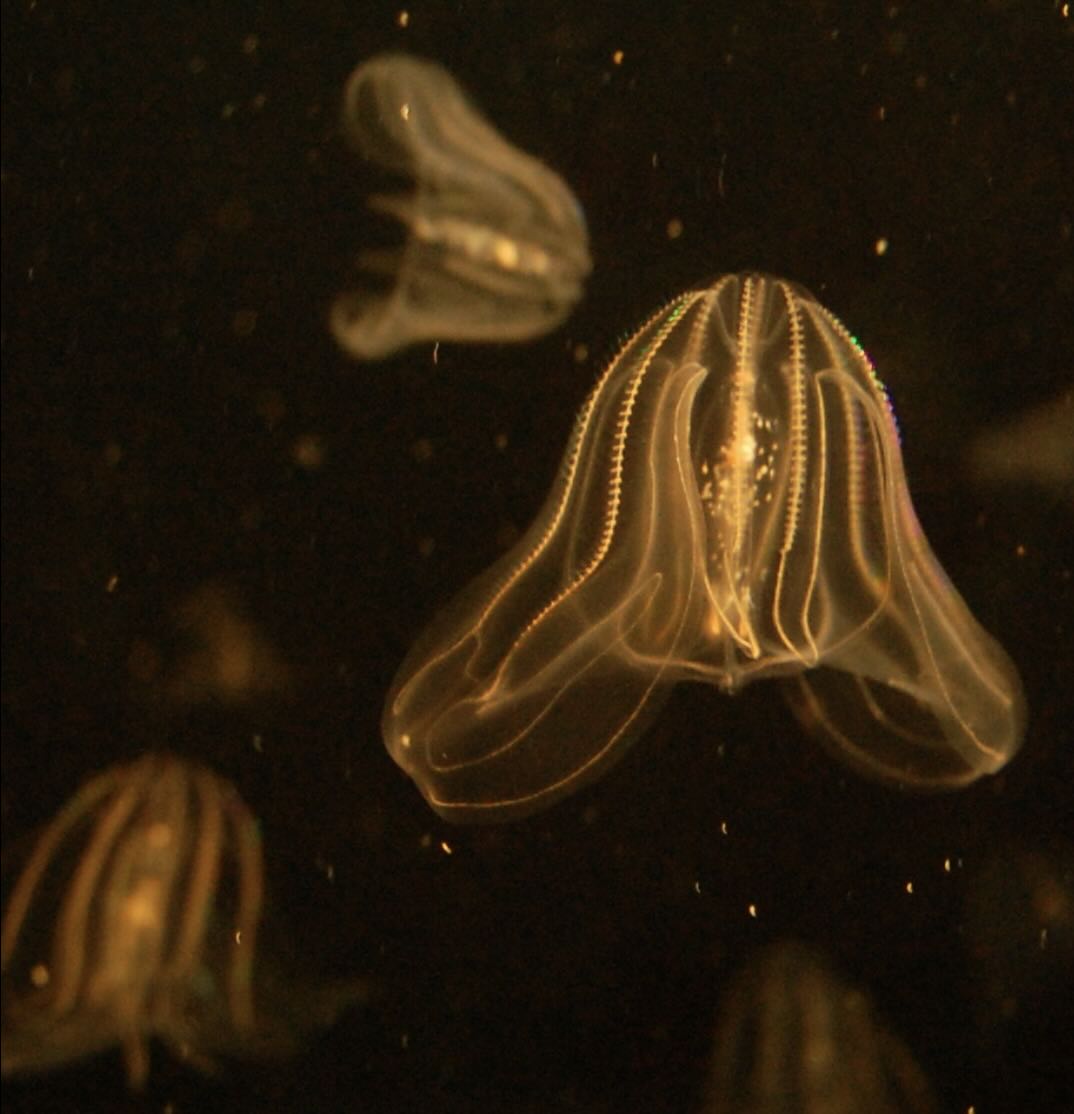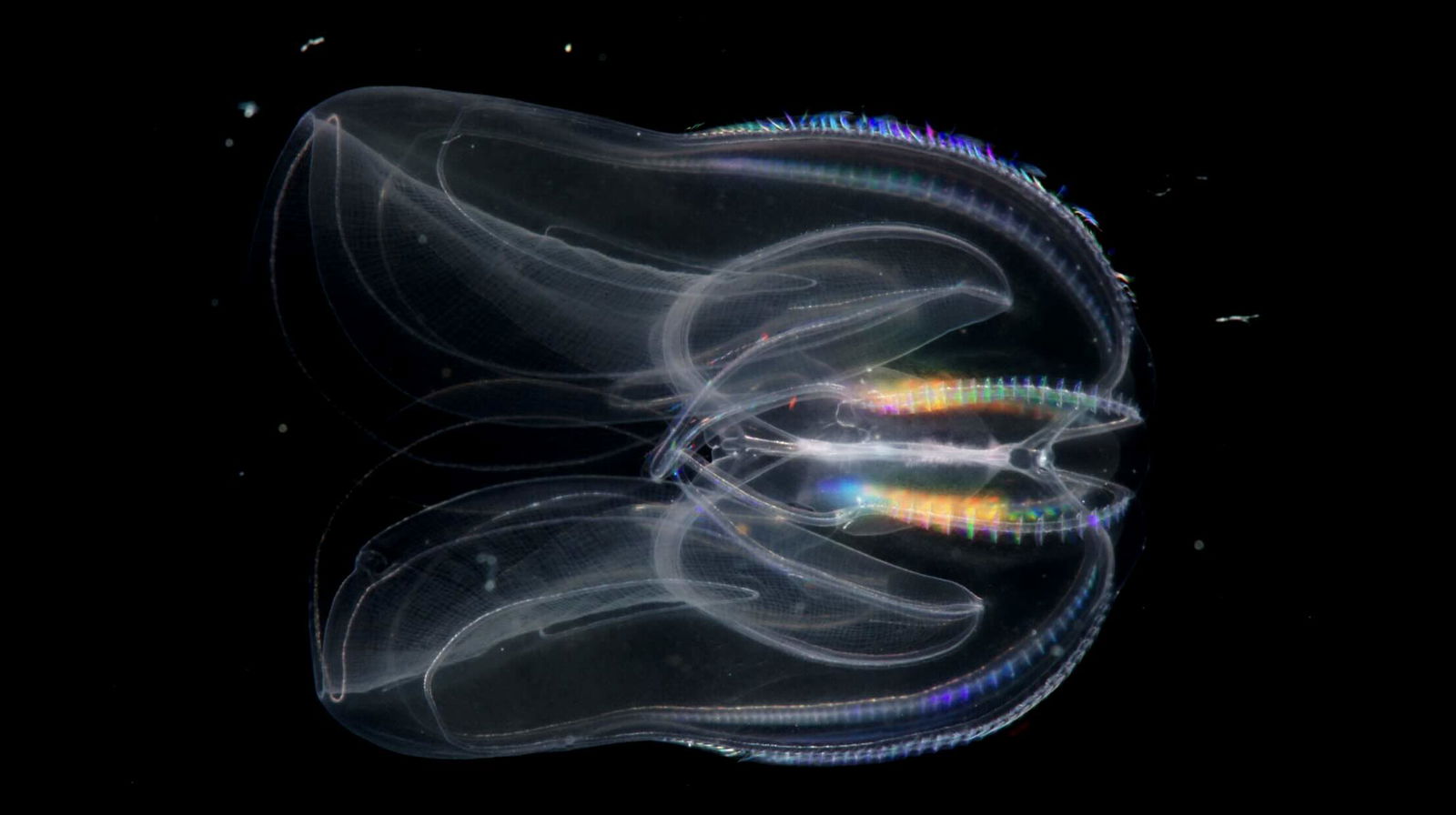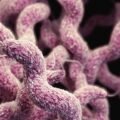In remarkable new study findings, scientists report the discovery of a species of comb jelly, a variety of marine invertebrate found in oceans around the world, that is capable of fusing together with other individuals of the same species to combine as a single animal following injury.
Observations of the species of comb jelly Mnemiopsis leidyi reveal that following their merging after injury, the newly combined jellies are capable of synchronizing muscular movements, as well as merging their digestive tracts in order to evenly distribute food.
The remarkable new discovery was reported in a new study published in Current Biology.
Kei Jokura, a researcher involved with the study with the University of Exeter, United Kingdom, and the National Institutes of Natural Sciences in Okazaki, Japan, said the new findings “suggest that ctenophores may lack a system for allorecognition,” which describes a creature’s ability to distinguish between itself and others of the same species.
Jokura says the data further points to the possibility that members of this species of comb jelly appear to be capable of rapidly merging their nervous systems, allowing them to engage in a variety of shared actions.
A Surprising Discovery
The incredible discovery was made while Jokura and colleagues were observing a small population of comb jellies held in captivity in a seawater tank in the lab, one of which appeared to be exceptionally large.


On further inspection, this “giant” comb jelly was revealed to possess what appeared to be two areas resembling what normally constitutes the back side of these creatures, along with two individual apical organs. Normally, comb jellies only possess one of these organs.
The unusual appearance of this jelly, while initially perplexing, led Jokura and the team to realized that it appeared to have been a composite creature formed by two separate creatures fusing together as one.
Creating a Composite Comb Jelly in the Lab
To test this remarkable possibility, the researchers conducted tests where they removed portions of other comb jellies in seawater tanks, placing the injured jellies close together.
In roughly nine out of ten instances they found that the injured jellies united, fusing together as one. After a single night spent in close proximity to another injured jelly, the newly combined jellies no longer displayed any apparent separation, with the entire fused body reacting to stimuli such as poking, revealing that their nervous systems had apparently fused.
Although the injured jellies only survived for about three weeks after successfully fusing, their remarkable ability to unite after injury and sustain themselves for this duration of time came as a surprise to Jokura and the research team.
“We were astonished to observe that mechanical stimulation applied to one side of the fused ctenophore resulted in a synchronized muscle contraction on the other side,” Jokura said in a recent statement.
During the team’s investigations into this odd newly discovered behavior, they found that spontaneous movements were observed in the newly fused jellies for approximately one hour after uniting. After this period, movement on each separate lobe of the fused pairs began to synch, with almost complete synchrony after between all muscle contractions after just two hours.
In addition to synchronization of muscular movements, the creatures also displayed indications that their digestive tract had fused after this period, carrying food particles along fused canals. In instances where more than one anus was present in the fused jellies, both were utilized in alternating movements for expelling waste.
Lingering Questions
The question of how, precisely, two separate creatures successfully fusing into a single individual would have emerged as a survival strategy for these comb jellies remains mysterious. Although in some respects such cooperative efforts make sense, the behavior is unusual given that most animals respond to injury through healing and activities that promote self-preservation of the individual.
Nonetheless, the unique abilities displayed by these creatures may be able to aid researchers in advancing the field of regenerative research in novel ways.
“Unraveling the molecular mechanisms underlying this fusion could advance these crucial research areas,” Jokura said, adding that the team’s future studies will seek to better understand precisely how these comb jellies may have developed such an unusual survival mechanism.
The team’s findings are detailed in a new research paper, “Rapid physiological integration of fused ctenophores,” which appeared on October 7, 2024, in the journal Current Biology.
Micah Hanks is the Editor-in-Chief and Co-Founder of The Debrief. He can be reached by email at micah@thedebrief.org. Follow his work at micahhanks.com and on X: @MicahHanks.

